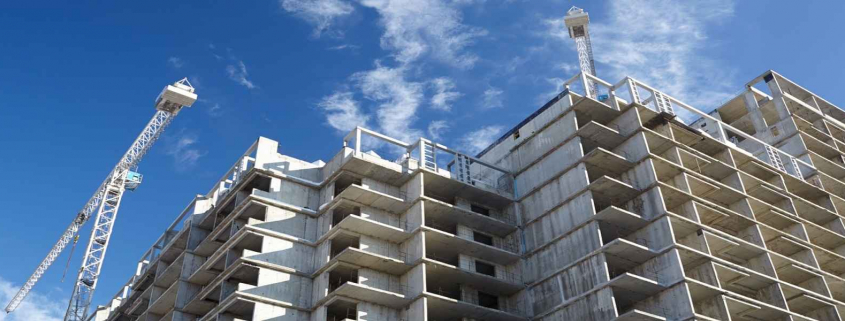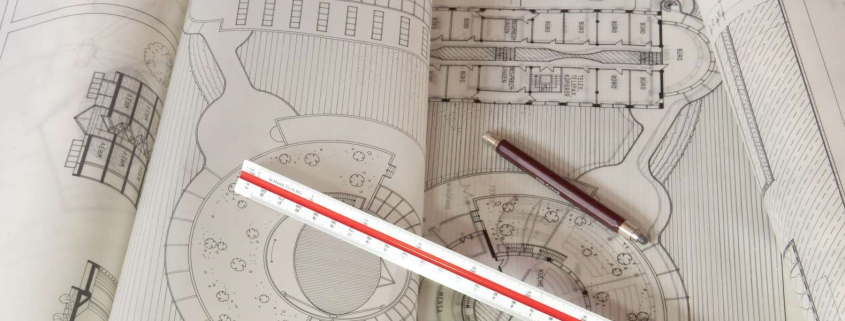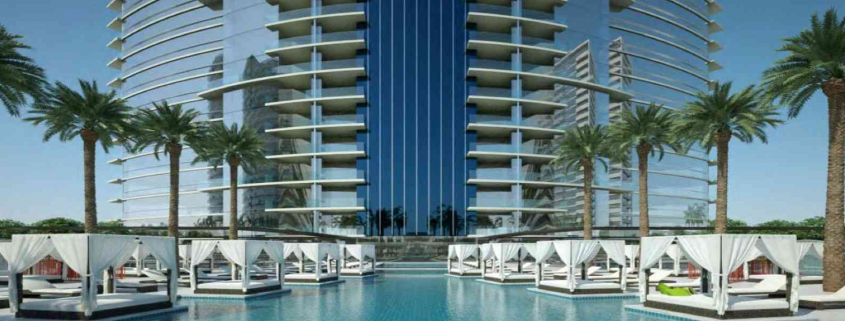In what could be a substantial step forward in local efforts to stem a housing affordability crisis, the city of Miami appears ready to begin requiring developers of some new residential towers to set aside a percentage of units for residents with low incomes.
The “inclusionary zoning” measure, just approved by the City Commission on a preliminary 4-0 vote, is the first in Miami-Dade County to mandate inclusion of affordable housing in new private development projects. The new rules are set for a second and final commission vote in December.
The zoning will apply only in a limited area that sits east of Overtown and west of Northeast Second Avenue and the Arsht Center for the Performing Arts, within the Omni community redevelopment district.
But city officials say it could produce thousands of new affordable dwellings relatively quickly as high-rise construction in the affected area continues to boom. The zone encompasses as many as 30 city blocks and large stretches of blighted or vacant land already undergoing redevelopment.
“It’s coming on very fast,” said Miami Commissioner Ken Russell, whose district includes the Omni area and who sponsored the measure. “I think the effect of this down the road could be quite significant.”
The measure passed on first reading with support from some local property owners and land-use attorneys who might in other circumstances object to the requirement for affordable housing. An attempt at inclusionary zoning at the county level, pushed by Miami-Dade Commissioner Barbara Jordan two years ago, failed to win commission approval in part because of vociferous opposition by developers.
But the two-step approach adopted by the city was embraced by some developers. That’s because it will also upzone the area, providing the developers more buildable density to offset the lower revenue they will generate from setting aside specific percentages of units for strictly defined affordable and workforce housing.
The measure will apply in an area stretching from Interstate 395 north to the south border of the historic Miami City Cemetery at roughly Northeast 18th Street, and between Northeast Second Avenue on the east to North Miami Avenue — though it carves out the Miami-Dade School Board properties. A new zoning map for the area must also be approved by the commission separately.
Developers were amenable to the approach because it’s already been tested in about half a dozen approved residential projects. The Argentinian Melo Group first proposed inclusion of workforce housing in three towers they are developing in the area in exchange for authorization to build more densely, and at least two other area developers followed suit.
But each of those was approved on a case-by-case basis by the city. Instead of piecemealing it, city officials proposed making inclusion of affordable housing the rule across the board.
“It’s taken market-rate developers and introduced them to a world of affordability that they may not have been comfortable with,” Russell said. “They recognized this is just another way to build another project, and it works. In order to make this work we decided on a bit of carrot-and-stick approach,” Russell added, referring to the inclusionary zoning rules. “The additional density is the carrot and not making affordability an option is the stick.”
“Since the new zoning measure was introduced, other area owners have expressed interest in developing once it’s in place, saidIris Escarra, an attorney with land-use powerhouse Greenberg Traurig who has shepherded dozens of real-estate projects to approval, including the three Melo towers in the area. “There are other owners in that area who want this as well,” Escarra said in a recent interview. “I really think the city is at the forefront of creating solutions for affordable housing. The three Melo towers include a total of 255 units for workforce housing, usually described as apartments affordable to teachers and police officers.”
The new city measure seeks to expand the range of affordable housing in Omni projects to people with even lower incomes. It gives developers the option of setting aside a larger number of workforce units or smaller numbers of units targeting low and very low-income people.
Under established legal definitions, affordable housing is aimed at households making 80 percent of the Miami-Dade median income or less, while workforce housing should be affordable to families at 120 percent of the median income. That means, for instance, rents affordable for a family of four with a household income of $62,950 or less, according to published figures for 2018. Workforce housing would comprise units with rents affordable to a family of four with an income up to $94,440.
But Russell and city officials want to make those income targets even lower to reflect the fact that incomes in the city are significantly less than those across the rest of the county. He and Commissioner Manolo Reyes successfully sponsored a companion resolution ordering city administrators to develop a housing income chart for the city that would more accurately reflect what its residents can afford.
Those new affordable and workforce units, Russell stressed, will be mixed in with and indistinguishable from market-rate units in the buildings, just as they are in the new Melo Group buildings. In traditional low-income housing development, entire buildings are devoted to affordable units, with few if any market-rate dwellings, often resulting in segregation of people by income.
“The idea behind the inclusionary zoning rule,” Russell said, “is to produce truly mixed-income buildings and a mixed-income community at a time when Miamians are increasingly physically separated by class. It will also allow lower-income people who work in or around downtown to live close to jobs and schooling, and not have to move to far-flung, more affordable suburbs where much of their time and income is tied to car use. It’s going to a blended neighborhood. Miamians are already becoming divided by income and neighborhood. We don’t believe it has to be that way.”
Russell and Escarra said the inclusionary measure will likely also produce more affordable housing more quickly than the traditional approach, which entails a grindingly slow process of cobbling together money and tax credits from state, local and federal governments and private lenders. Miami-Dade has used that approach, in tandem with private affordable-housing developers, to produce thousands of affordable housing units across the county. Those sources, however, are drying up and few new projects are winning approval for the needed credits and financing, they said.
“This will create the affordable housing a lot faster than the city could build it,” Escarra said.
Source: Miami Herald










